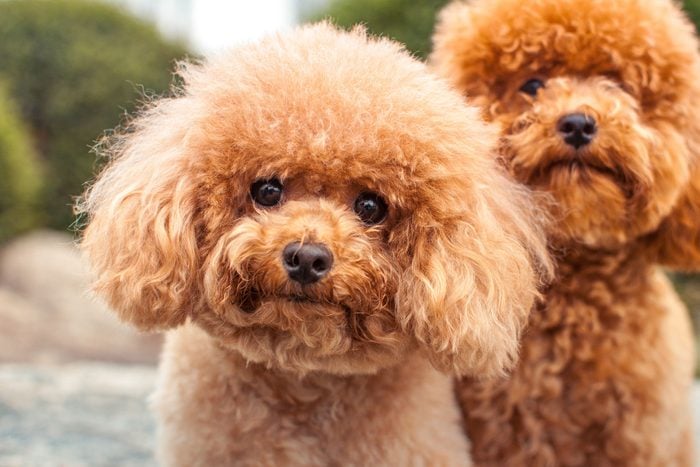
Unbearably cute teddy bear dogs
No, you’re not seeing things. That’s a living, breathing, impossibly cute dog that looks a heck of a lot like the stuffed animals we cherished and toted around when we were kids. But however often you’ve heard the term, “teddy bear dog” isn’t a real breed. “It appears that a ‘teddy bear dog’ is a clever tag slapped on a mishmash of breeds that happen to resemble a plush toy,” says Matthew McCarthy, DVM, a veterinarian at Juniper Valley Animal Hospital in Queens, New York.
What is a teddy bear dog?
Essentially, it’s just a fun and endearing way to describe dogs based on their looks—the same way we might say a big ole Newfoundland is in a group of dogs that look like bears. Like the variety of teddy bears piled up on a child’s bed, these pups are all different. Some have scruffy faces, while others are super fluffy. Some are big, and others are small. But they all have sweet, expressive eyes and cute button noses we can’t resist.
The most popular teddy bear dogs
To get more insight into these cute and cuddly teddy bear dogs, Reader’s Digest talked to Dr. McCarthy and fellow veterinarian Sam Meisler, DVM, founder of PetWellClinic. Ahead, you’ll learn about some of the most popular dog breeds that could pass for teddy bears, along with the characteristics that make them so lovable. Cuteness overload begins now.
Get Reader’s Digest’s Read Up newsletter for more pets, humor, travel, tech and fun facts all week long.
About the experts
Reviewed for accuracy by: Caroline Coile, PhD, an award-winning journalist specializing in canine breeds, health and science. She’s the author of 34 books, including Barron’s Encyclopedia of Dog Breeds. |
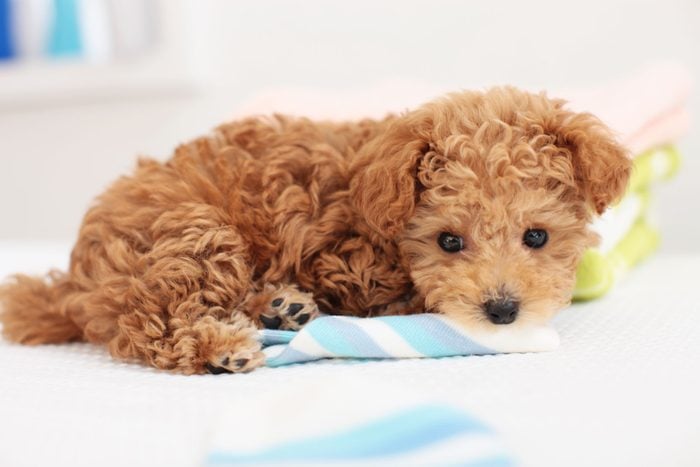
Toy poodle
Is it OK to be a grown-up who still totes a teddy bear everywhere? It is when you have a real-life cutie like the toy poodle. (That said, the standard poodle and miniature poodle are just as cute.) The soft curls, soulful yet playful eyes and button nose on this breed make it look like the cuddliest teddy bear ever. And as a bonus, those glorious waves won’t end up all over your floor and furniture. Poodle fur (referred to as hair) can grow without falling out for years, just like human hair. Of course, like all dogs, mama poodles lose their coat after giving birth. But otherwise, these dogs don’t shed much. That’s why they’re a great breed for anyone with allergies.
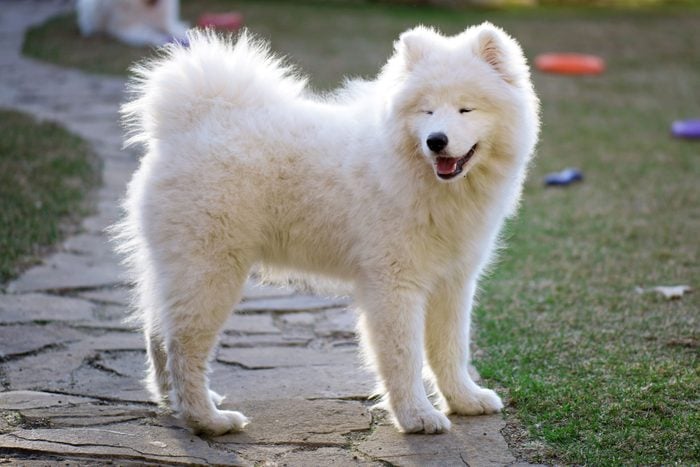
Samoyed
These oh-so-fluffy snowballs are one of the 14 ancient dog breeds most similar to the wolf. Yet the smiling Samoyed is anything but a wild loner howling at the moon. These dogs love to be with their people and thrive on activity and socialization. They love to run and need a lot of exercise to be happy. Although they shed a lot, and their coat may seem to stick to all your furniture, their fur is nonstick when it comes to dirt. When dirt gets on that gorgeous white coat, it’s quite easy to brush out.
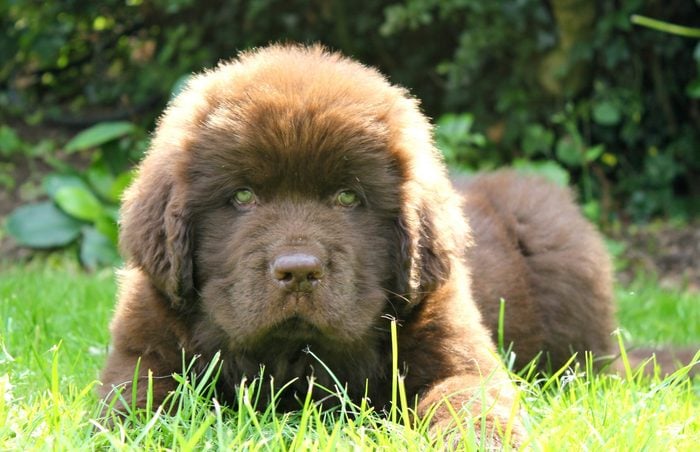
Newfoundland
It’s hard to resist this chonky beast. Some dogs have a lot of fluff but not much body weight. That isn’t the case with Newfies. They are solid masses of cuteness, with cheeks so snuggly, you’ll be looking for ways to work from home so you can spend more time burying your face in all that sweetness. And there’s plenty of sweetness to go around with this large breed, as the dogs can weigh up to 150 pounds! They are some of the friendliest and most docile breeds around and are often dubbed the “nanny breed” because they’re affectionate and protective of the children in their family.
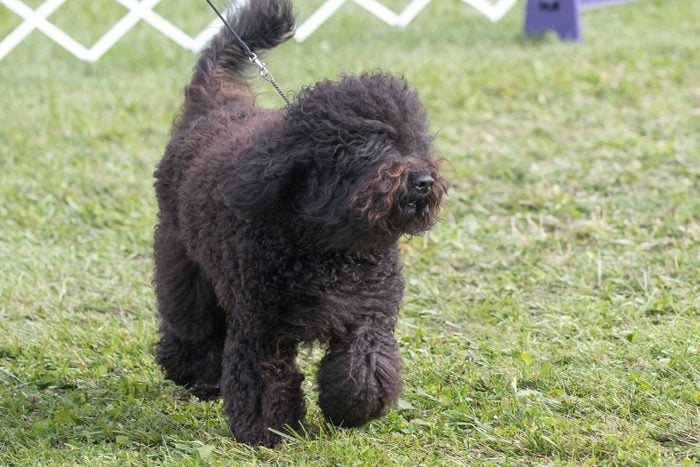
Barbet
Hailing from France, the Barbet is a beloved water dog noted for its savoir-faire in bird hunting and swimming. These dogs are loving and goofy companions that enjoy hiking, doing agility courses and traveling with their people. Like most dogs, this teddy bear dog is happiest when it’s busy with its human family. “Leaving them alone for extended periods may create conditions in which they develop behavioral issues,” says Dr. Meisler. “They thrive on companionship and are happiest when surrounded by family.” And like poodles, they have hair that tends not to shed.
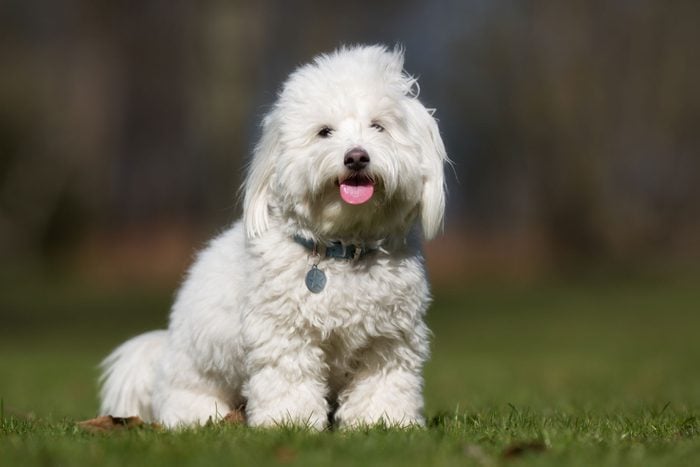
Coton de Tulear
Some dogs that look like teddy bears come with cute names to match their ultra-cute faces. The coton de Tulear is a dog breed you’ve probably mispronounced a bunch, but this sweetheart will forgive you when you pronounce it “coe-TAWN day TULE-ee-r.” This fluffy, white cotton ball is a happy-go-lucky, life-of-the-party pup. Coton is French for cotton, and Tulear is a port city in Madagascar, where these dogs originated. Their irresistibly soft coats and adorable faces make them hard to put down. But when you do, they might stand on their hind legs to get your attention again. They love to do tricks, play inside and snuggle.
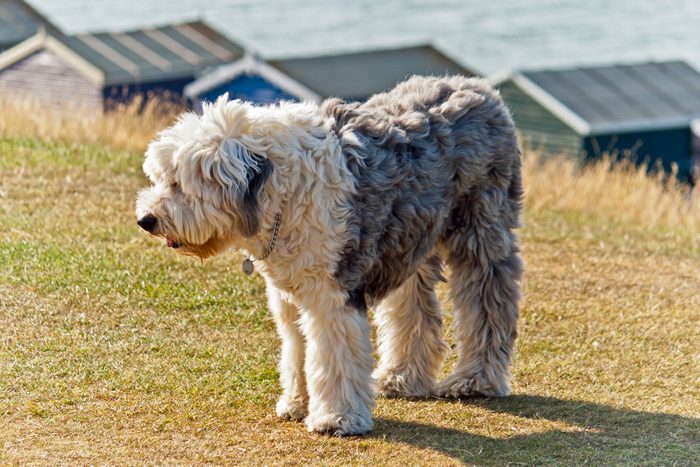
Old English sheepdog
This shouldn’t come as a surprise: The Old English sheepdog hails from England, where it was bred to herd and guard sheep. “Today, they are a beloved companion breed known for their friendly disposition and distinctive appearance,” says Dr. Meisler. So go ahead and hug these pups’ shaggy, profuse double coats—they won’t mind.
These are even-tempered dogs that love to be with their humans. And that includes “talking” with them. The Old English sheepdog can be vocal and have a distinctive bark, so you might need to learn how to stop them from barking—without yelling.
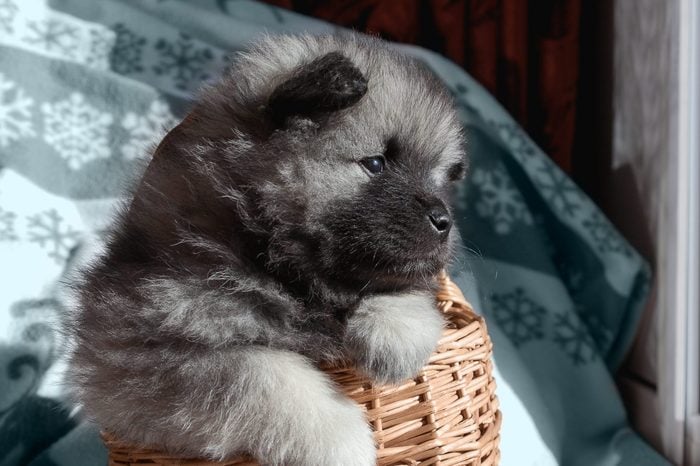
Keeshond
This super-cute and chunky dog hails from the Netherlands and is pronounced “caze-hawnd.” The breed’s warm, sensitive and congenial nature makes it an ideal comfort dog. These pups’ gorgeous coats keep them warm in the winter, which is their favorite season. These gray-and-black fluffballs were originally bred as watchdogs on barges, but these days, their main job is as humans’ best buddies.
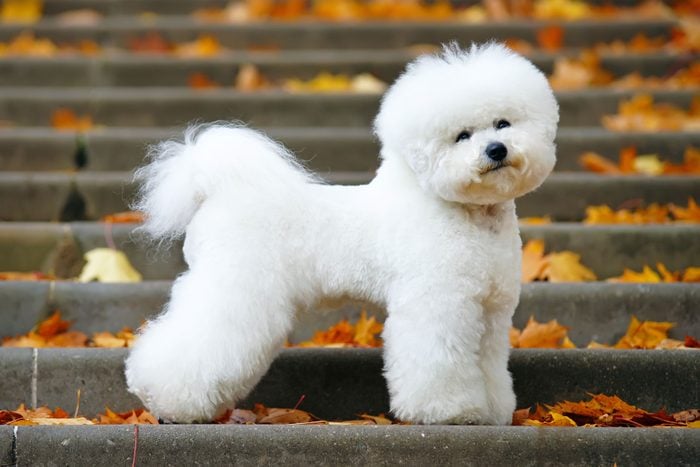
Bichon frise
These adorable little pups belong to a group of white dogs once known as Barbichons. It included the Maltese, the Havanese, the Bolognese, the coton de Tulear and, of course, the bichon frise. “Each of these breeds has its own distinct features, but they share common traits, including their small size, friendly dispositions and fluffy coats,” says Dr. Meisler. These sweet teddy bear dogs are comedians who relish being in the spotlight. They seem to feed off laughter and smiles, and they keep the show going until they tire out. Then they turn into cuddle monsters!
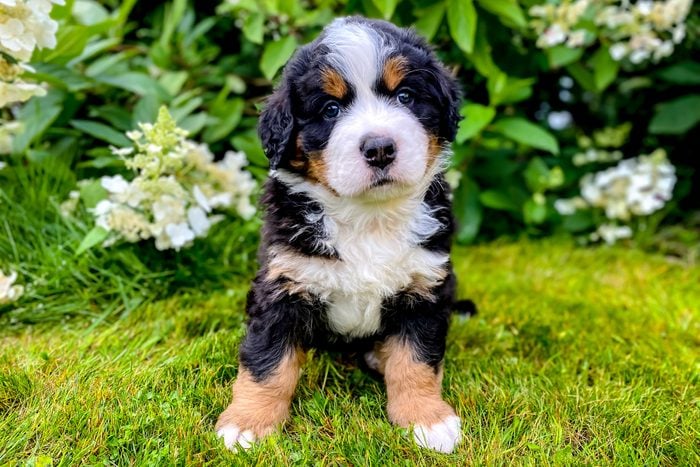
Bernese mountain dog
What’s inside the XL Bernese mountain dog package? “Berners,” as adoring fans call them, are super chill and notably patient around children. Sweet and affectionate, these chunksters are devoted to their families and enjoy being house dogs, especially when it’s blazing hot outside. Hot climates and heavy coats don’t mix! It’s critical to keep an eye out for the signs of heatstroke. Berners love cooler temps and will be itching to get outside to frolic in the snow and even pull the kiddos on sleds.
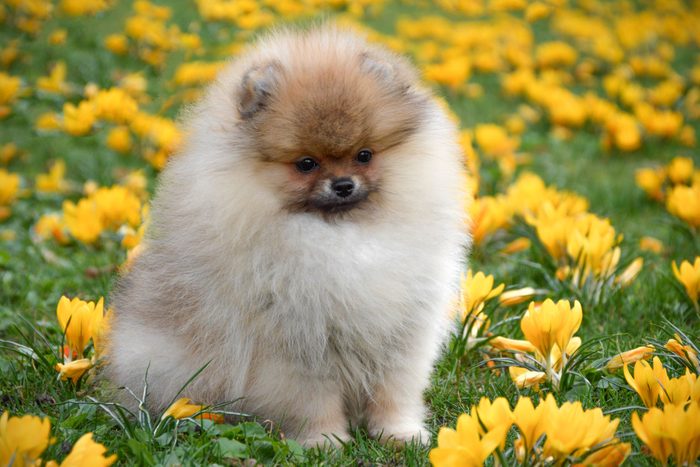
Pomeranian
Can a teddy bear dog also look like a baby fox? We think so! Pomeranians have a fluffilicious double coat, along with the expressive eyes and button nose of a teddy bear. They adore spending time with their humans, snuggling on warm laps or catching rides in tote bags. Since this toy breed weighs around 7 pounds, carrying your precious Pom is a fun way to tone up your arms while you’re out and about. This teddy bear wannabe is the smallest member of the spitz family, but it may have the biggest personality! These dogs are real bears at heart, ready to take on the world.
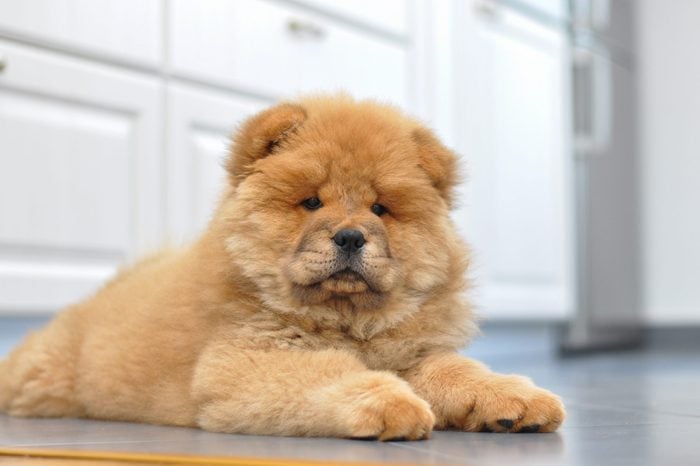
Chow chow
What do we love more: the layers of fluff, the wrinkled brow or the chunky belly? Honestly, we can’t decide. Enjoy the puppy days when you can still pick up your chow chow—eventually it’ll pack on serious pounds. These fluffballs aren’t exactly lapdog material—and that’s OK with them. That’s not to say they’re not affectionate, though. This Chinese dog breed is devoted to its family, but it tends to possess a catlike personality; chows sometimes can be aloof and covet their independence. Because of their strong wills, it’s essential to socialize them early and often.
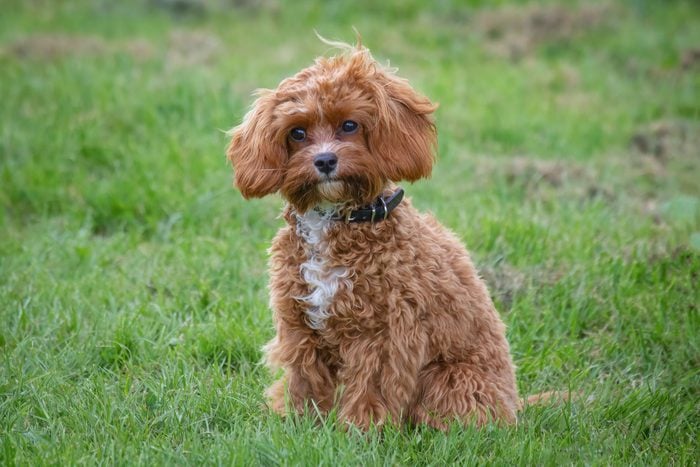
Cavapoo
Can you guess the two purebred dog breeds that make up this adorable little nugget? The Cavapoo, also known as the Cavadoodle, is a delightful mix of a miniature or toy poodle and a Cavalier King Charles spaniel. Both parent dog breeds are ideal for families. Poodles are wicked smart and athletic, and Cavaliers are lap-loving cuddle bugs. However, the characteristics of a mixed breed are unpredictable. You might get more of the sporting poodle side than the lap-loving spaniel side. Regardless of how a particular Cavapoo ends up, it will definitely be one of the cutest mixed-breed dogs you can bring home.
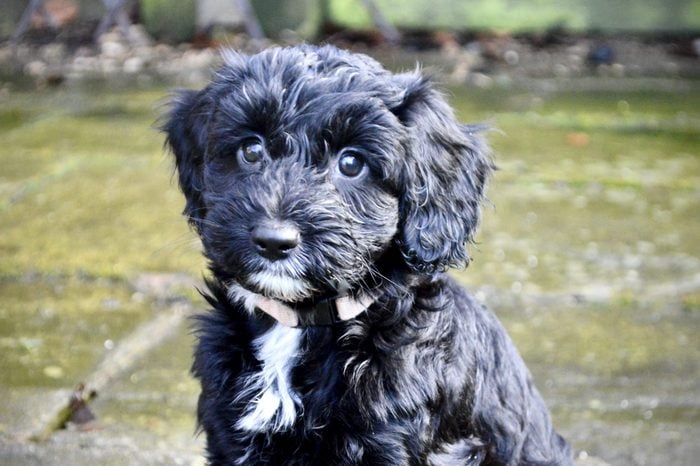
Cockapoo
Back in the ’50s, breeders in the United States began crossing cocker spaniels with poodles to create a cross-breed dog with the lovable traits we adore today. “Their goal was to create a breed that combined the friendly, affectionate nature of cocker spaniels with the hypoallergenic and intelligent qualities possessed by poodles,” says Dr. Meisler. First-generation cockapoos will have curly coats, like their poodle parent. Subsequent generations could be wavy or curly—it just depends on the shuffle of the genes. Both parent breeds are known for having happy and lively dispositions, as well as for being easy to train and affectionate. Cockapoos are not only great family dogs; they also get along with cats and other pups.
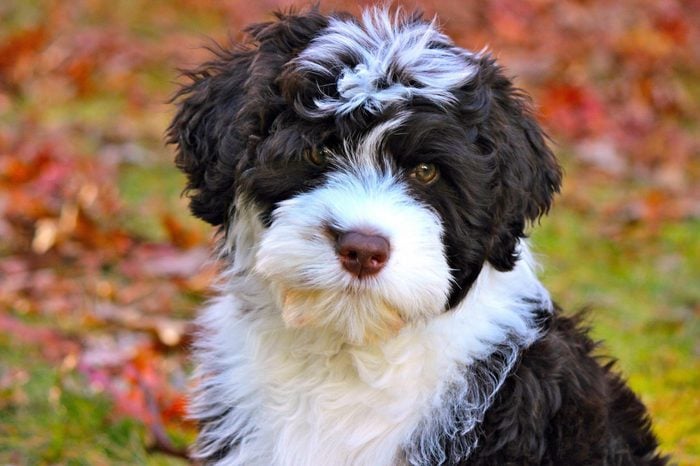
Portuguese water dog
Where is your port of call? Wherever it is, the Portuguese water dog will get you there. These pups are natural-born swimmers of the elite status—we’re talking a Michael Phelps kind of talent here. They have webbed paws and tails that act as rudders to glide through the water with ease, and their waterproof coats are hypoallergenic and don’t shed much. Personality-wise, they are loyal and affectionate dogs. “Portuguese water dogs generally form close relationships with their owners and are highly adaptable to various living environments,” says Dr. Meisler.
What to know before adopting a teddy bear dog
These sweet pups have cornered the market on cuteness, but there’s more to consider before bringing one home. “Like for any breed, one should do their homework and see if that particular breed or breed mix is right for them,” says Dr. McCarthy.
You’ll also want to consider the costs of owning a dog; you’ll have to shell out for dog food, vet visits, toys and grooming. “Certainly some of these breeds may need more grooming/shaping to keep their adorable teddy bear appearance,” he says. But teddy bear dogs pay you back with unconditional love … and may even ward off the monsters under your bed.
Why trust us
At Reader’s Digest, we’re committed to producing high-quality content by writers with expertise and experience in their field in consultation with relevant, qualified experts. For this piece, Lisa Marie Conklin tapped her experience as a reporter who has covered dogs and pets for seven years, then Caroline Coile, PhD, an award-winning journalist specializing in canine breeds, health and science, gave it a rigorous review to ensure that all information is accurate and offers the best possible advice to readers. We verify all facts and data, back them with credible sourcing and revisit them over time to ensure they remain accurate and up to date. Read more about our team, our contributors and our editorial policies.
Sources:
- Matthew McCarthy, DVM, veterinarian and founder of Juniper Valley Animal Hospital in Queens, New York; email interview, Jan. 30, 2024
- Sam Meisler, DVM, veterinarian and founder/CEO of PetWellClinic; email interview, Jan. 29, 2024
- American Kennel Club: “10 Things You Probably Didn’t Know About the Smiling Samoyed”
- American Kennel Club: “10 Facts About the Poodle”
- American Kennel Club: “Bichon Frise”
